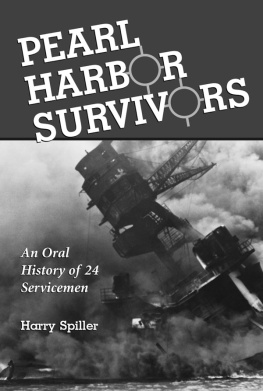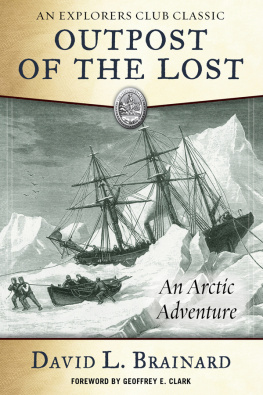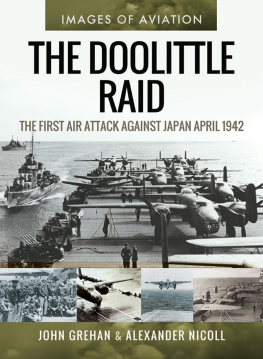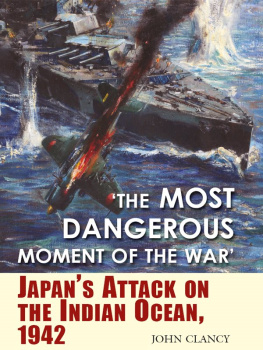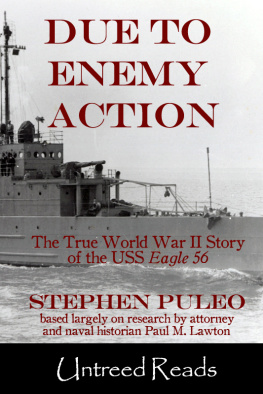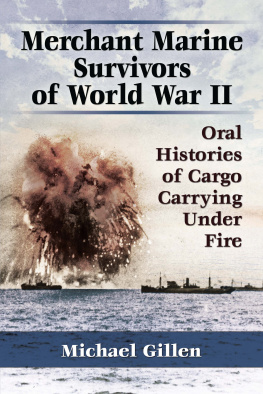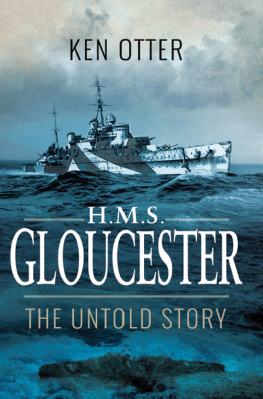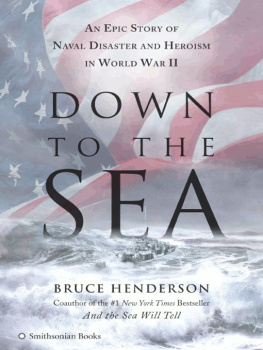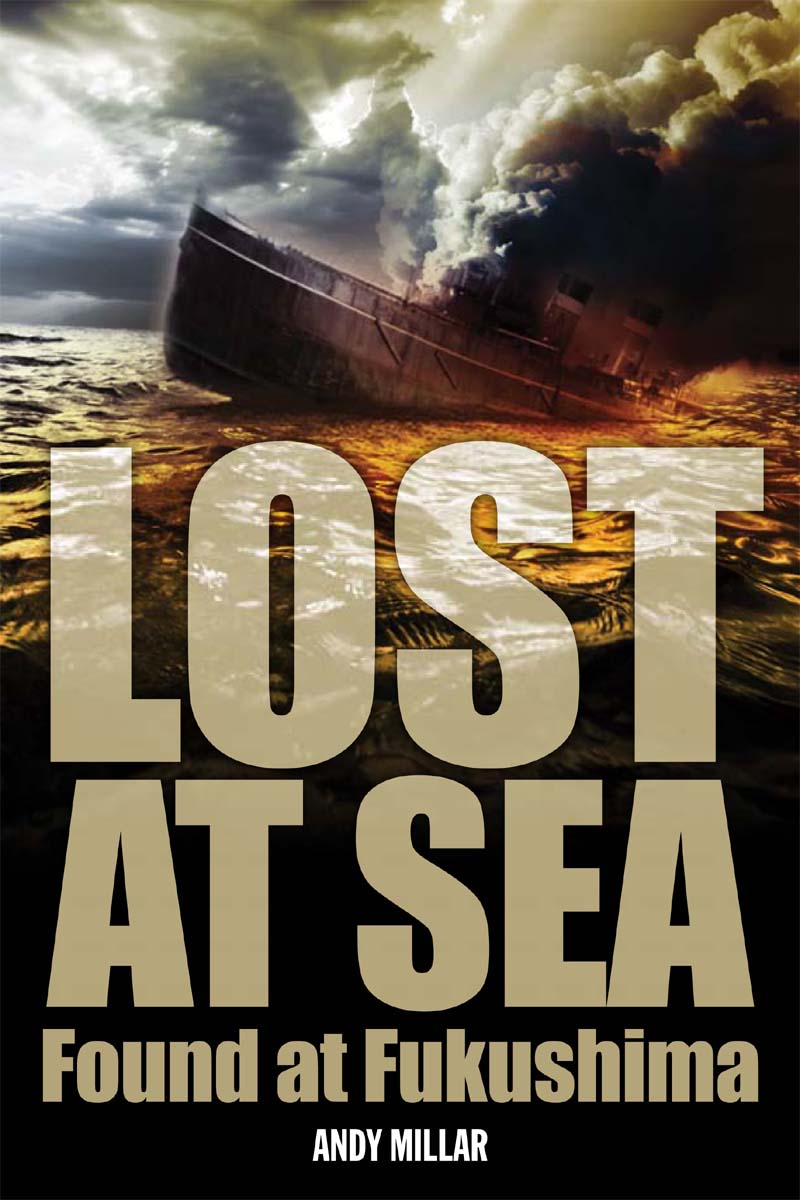


www.bigskypublishing.com.au
Copyright Andy Millar 2012
First published 2012
Copyright remains the property of the author and apart from any fair dealing for the purposes of private study, research, criticism or review, as permitted under the Copyright Act, no part may be reproduced by any process without written permission.
All inquiries should be made to the publishers.
Big Sky Publishing Pty Ltd
PO Box 303, Newport, NSW 2106, Australia
Phone: | 1300 364 611 |
Fax: | (61 2) 9918 2396 |
Email: | info@bigskypublishing.com.au |
Web: | www.bigskypublishing.com.au |
Cover design and typesetting: Think Productions
National Library of Australia Cataloguing-in-Publication entry
Author: Millar, Andy.
Title: Lost at sea : found at Fukushima / Andy Millar.
ISBN: 9781921941528 (pbk.)
Notes: Includes bibliographical references.
Subjects: Willesden (Steamship)
Thor (Ship)
World War, 1939-1945--Naval operations, British.
World War, 1939-1945--Transportation--Great Britain.
Shipwrecks--Atlantic Ocean.
World War, 1939-1945--Prisons and prisoners, British.
World War 1939-1945--Prisoners and prisons, Japanese--Japan--Fukushima-ken.
Prisoners of war--England.
Prisoners of war--Japan--Fukushima-ken.
Merchant marine--England--History--20th century.
Merchant mariners--England--Biography.
Dewey Number: 940.545941
CONTENTS
PREFACE
KERI KERI NEW ZEALAND
9 December 2003
It was overcast with a light drizzle, as it often is at funerals. The family, together with fifty or so friends and acquaintances, had gathered in New Zealands far north, at the little missionary church at Waimate North, to celebrate the life of my father, David Millar. Three months earlier we had gathered in the same place to say goodbye to my mother, Muriel: they had been married sixty-seven years.
At ninety-two and suffering from cancer, my father quietly went about putting his affairs in order following Muriels death, then died in his sleep on 4 December 2003, holding his daughters hand.
Sitting quietly in the little church I began to reflect on who our father really was. We had been an odd family in many ways and never very close. My elder brother Don and I had little recollection of the man who always seemed to be away at sea when I was little and visited us only irregularly. I remembered him as being very strict and more than a little frightening. I was 10 years old when he retired from the sea and came to live with us on a permanent basis. I was never quite comfortable in his presence, nor was I, in either an academic or sporting sense, able to live up to what I imagined were his expectations. The arrival of our sister, Margaret, when I was 15 years old, transferred the focus from us boys much to our relief.
Don and I knew that Dad had been in the Merchant Navy and had been a POW in Japan, but he was a very private man and never spoke of these things until very late in life.
After the funeral, in a wardrobe in the retirement home he had shared with my mother during the last years of their lives, I found a cardboard carton, a relic of some bygone move, stencilled: EMPIRE FORWARDING COMPANY LIMITED REMOVALISTS
Full of documents dates, places, ships names, photographs, papers, letters and even a poem in my fathers handwriting I began to realise that the carton was saying: My name is David Millar and this was my war.
The story inside this unassuming cardboard box was remarkable. My father had kept it hidden from us for nearly sixty years; all wed heard until then had been hints, comments and asides and what seemed, to us boys, to be a totally unreasonable, and little understood, attitude towards wasted food.
Using my fathers material, my memories of the limited conversations Id had with him about the War, interviews with the few remaining people scattered across the world who were there and remember those days, and public records, I have put together this story.
All of the significant events, times, dates, places, ships and people in the story are true, although I have taken one small liberty. As it is not possible to know precisely what was said, or the detail of some of the events, I have used my own experiences from forty years service with the Royal New Zealand and Royal Australian Navies to reconstruct military and technical dialogue, and to add detail that I believe very closely follows what was actually said and done. With this qualification, what follows is true; this is what really happened.
Some of the technical and military terms used may need explaining. To assist in this regard, I have gathered them together in a Glossary at the back of this book.
This, then, is the story of David Millars War.
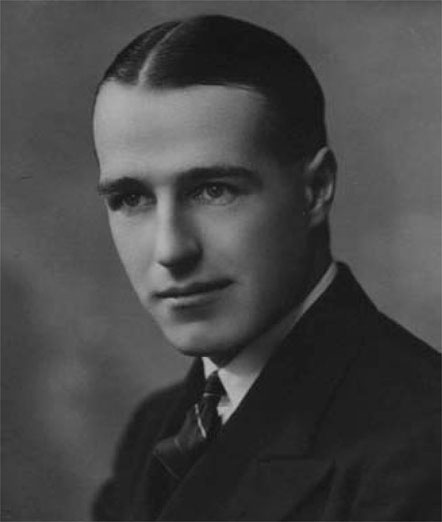
David Millar 1937.
PART I
CAPTURE
November 1941 April 1942
DEN HELDER NETHERLANDS
1530 hours, Friday 28 November 1941
Leinen los!
Oberleutnant zur See Karl Mueller, Commanding Officer of Schnellboot S-52, gave the order to cast off.
The last lines tethering the E-Boat to the pier at the Squadrons base, near the entrance to the Waddenzee, splashed into the water and were quickly recovered by the small party of sailors on the dock. The little ship backed away into the main shipping channel and her sister ships, S-51 and S-64, took up their positions in line astern. They were stationed approximately half a cables length (90 metres) apart for the passage through the shoals out into the North Sea.
As they passed the outer channel marker, Mueller, who was the senior Commanding Officer of the three, glanced astern to ensure that S-51 and S-64 were keeping station. He grunted with satisfaction. S-52 rose and twisted gently in the light northerly swell. Mueller reached out and eased the main throttles forward. The response from the three powerful Daimler-Benz diesels was virtually instantaneous. The little ship surged forward, alive and eager, throwing up a cockscomb of boiling white water in her wake.
The three E-Boats were part of the 4th Schnellboot Squadron, under the command of Kapitnleutnant Baetge of the German Kriegsmarine (Navy). Their mission was to lay mines northwest of Cromer off the English Norfolk Coast, then attack British shipping in that area as the opportunity presented.
An almost stationary, intense, low pressure system over Iceland created a stiff south-westerly breeze, whipping up whitecaps that slapped against the boats hull. At the pre-sailing briefing, the Squadron Met. Officer had advised that an associated frontal system was crossing the Irish Sea and would bring deteriorating weather, with the wind veering to the west and freshening to Gale Force 8. This would almost certainly bring squalls and driving rain to the E-Boats planned operations area within 24 hours. Visibility during the day was expected to be 10 miles, dropping to 2 miles or less in heavy rain. Already, the towering foul-weather cumulus was building to the west; a warning of the worsening conditions to come.



